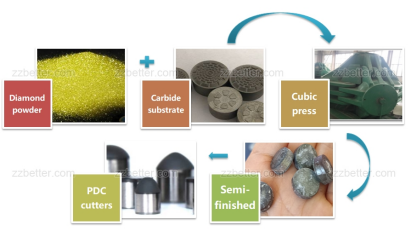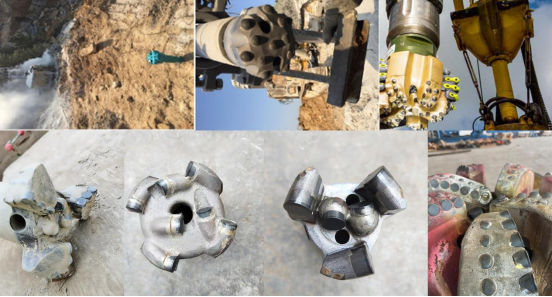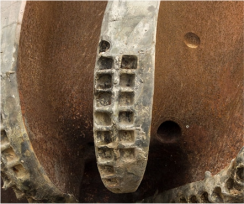How Much Do You Know About The PDC Cutter?
How much do you know about the PDC cutter?
About PDC (Polycrystalline Diamond Compact) Cutter
PDC (Polycrystalline Diamond Compact) Cutter is a kind of superhard material that compacts polycrystalline diamond with tungsten carbide substrate at ultra-high temperature and pressure.


The invention of the PDC cutter propelled the fixed-cutter bit to the fore in the drilling industry, and the idea instantly became popular. Since the shearing action of PDC cutters is more effective than the crushing action of a button or toothed bit, fixed cutters- bit are in high demand.
In 1982, PDC drill bits accounted for only 2% of the total feet drilled. In 2010, 65% of the total drilled area was produced by PDC.
How PDC Cutters are made?
PDC Cutters are made from tungsten carbide substrate and synthetic diamond grit. It is made using a combination of high temperature and high pressure with the catalyst of cobalt alloy to help bond diamond and carbide during the sintering process. During the cooling process, the tungsten carbide shrinks at a rate of 2.5 times faster than the diamond, which combines Diamond and Tungsten Carbide together and thereafter forms a PDC Cutter.

Characteristics and Applications
Since PDC Cutters consist of diamond grit and tungsten carbide substrate, it combines advantages of both diamond and tungsten carbide:
1. High abrasion resistant
2. High impact resistant
3. High thermal stable
Now PDC Cutters are widely applied to oilfield drilling, gas and geological exploration, coal mining, and many other drilling and milling applications, tooling as PDC Drill Bits, such as Steel PDC Drill Bits & Matrix PDC Drill Bits for oil drilling and Tri-cone PDC Drill Bits for coal mining.

Limitations
Impact damage, heat damage, and abrasive wear all inhibit a drill bit's performance and can occur in even the softest geological formations. However, the most difficult formation for a PDC bit to drill is extremely abrasive ones.

Large VS small cutter
As a general rule, large cutters (19mm to 25mm) are more aggressive than small cutters. However, they may increase torque fluctuations. Additionally, if the BHA has not been designed to handle the increased aggressiveness, instability may result.
Smaller cutters (8mm, 10mm, 13mm, and 16mm) have been shown to drill at higher ROP than large cutters in certain applications. One such application is limestone.
Also, bits are designed with smaller cutters but more of them can withstand higher impact loading.
Additionally, small cutters produce smaller cuttings while large cutters produce larger cuttings. Large cuttings may cause problems with hole cleaning if the drilling fluid cannot carry the cuttings up the annulus.
cutter shape

The most common PDC shape is the cylinder, partly because cylindrical cutters can be easily arranged within the constraint of a given bit profile to achieve large cutter densities. Electron wire discharge machines can precisely cut and shape PDC diamond tables. The nonplanar interface between the diamond table and substrate reduces residual stresses. These features improve resistance to chipping, spalling, and diamond table delamination. Other interface designs maximize impact resistance by minimizing residual stress levels.





















